Health Care > DISCUSSION POST > HSA 501 Week 8 Assignment 2: Managing Health Care Quality (worth 200 points). (All)
HSA 501 Week 8 Assignment 2: Managing Health Care Quality (worth 200 points).
Document Content and Description Below
Running Head: Managing Health Care Quality 1 Managing Health Care Quality HSA 501: Management in Health Care MANAGING HEALTH 2 The purpose of quality management in health care is to enh... ance viability in the way that care is delivered in a healthcare setting as well as implement quality care of patients (Sarkissian, 2017). Professor Avedis Donobedian, an architect in the field of quality in healthcare, has defined it as "... almost anything anyone wishes it to be, although it is, ordinarily, a reflection of values and goals current in the medical care system and in the larger society of which it is a part (Donobedian, 2005)." It stands to reason then that an important goal of quality management in healthcare is to ensure, define and improve patient safety. Quality of care and patient care management are most important and essential for a hospital to increase its value. For most people, ‘quality of care of a hospital’ means proper and dedicated treatment to patients by doctors and other staff, at the right time, in the right way (Burns, Bradley & Weiner, 2012). The purpose of this paper is to write a report for Sunlight Hospital on certain improvements in quality of patient care while considering important measurements of quality of care and main features used to design a successful quality improvement plan for increasing efficiency and value of the hospital. Five Measurements of Quality Care in a Hospital In the process of improving health care quality, measuring the quality of care in a hospital is the most essential step. Quality measurement can help to improve patient care management. Quality measures provide information about how well a hospital offers care for its patients (Burns, et al., 2012). This information can help when comparing Sunlight Hospital with other hospitals. There are various measurements of quality of care used in hospital, which include: 1) structure of the hospital, 2) achievement of strategic goals, 3) time, 4) patient safety, and 5) patient experience (Burns et al., 2012). MANAGING HEALTH 3 Structure of Hospital Settings: This measurement evaluates both the hospital building and staff infrastructure, such as the hospital’s administrative office, doctor chambers, patient wards, outdoor wards, patient waiting rooms, capable staffing facilities, and availability of equipment to measure the quality of care (Burns et al., 2012). This measurement matters to patients in choosing a hospital for their treatment. The basic reason for using structure measurement for a hospital is that it gives patients a sense of hospital’s system, capacity and processes to provide quality care (Burns et al., 2012). Sunlight Hospital needs to improve its structure of hospital settings so as to improve quality of care for its patients. Achievement of Strategic Goals: The way to ensure achievement of strategic goals in any healthcare setting is to make sure that there is a creation of accountability (Rodak, 2013). One way to do this is in utilizing a Balanced Scorecard. The Balanced Scorecard allows an organization to get all of their team members on the same page with organizational goals in a clear and understandable way (Jackson, 2015). The four sections of the Balanced Scorecard - Customer, Internal Processes, Financial, and Learning/Growth – make it possible for healthcare organizations to meet and exceed their strategic goals. These metrics allow the patients to get to a place where they are healthy and thriving and happy (Jackson, 2015). Time: Time in a healthcare setting consists of things such as access to care as measured by waiting times and measurement of delays in care (Burns et al. 2012). Time is money to a business. However, to the patient, time constraints can have serious consequences such as increased pain, suffering, and mental anguish. In certain instances, these wait times can even result in poorer medical outcomes—transforming potentially reversible illnesses or injuries into chronic, irreversible conditions, or even permanent disabilities (Barua, 2013). In many instances, patients may also have to MANAGING HEALTH 4 forgo their wages while they wait for treatment, resulting in an economic cost to the individuals themselves and the economy in general (Barua, 2013). Patient Safety: Patient safety is one of the most important measurements of quality care for every hospital. This measure can reflect quality performance by reducing patient injuries or harm due to occurrences of errors in medical procedures or operations (Greenwald, 2010). Hospitals should follow proper and accurate treatment operations to prevent medical errors from happening. This measure can give patients a sense of quality of care. Sunlight Hospital should strive for such measures. Patient Experience: Patient experience measures present feedback from patients on received care in a hospital setting. Patients can give their own view of whether or not hospital staff and doctors are providing proper treatment and care, even for urgently needed care. Patient experience can represent patients’ satisfaction rate (Greenwald, 2010). As per the patients’ feedback, it is essential for Sunlight Hospital to improve in quality of care. In choosing a hospital for inpatient care or emergency, these measurements matter to patients because these quality measures may help patients decide where to search for potential doctors and where they will get effective treatment with care. From the information obtained from these measurements, patients can find a healthcare center or hospital where they can get effective patient services, proper process of care, better outcomes, better patient safety, and finally effective quality of care (Burns et al., 2012). Four Main Features in Health Care Organizations in a Successful Quality Improvement Plan In designing a quality improvement plan, health care organizations should focus on features like patient-centered care, efficiency and effectiveness, timeliness, and safety to bring MANAGING HEALTH 5 improvements in patient care. Sunlight Hospital should focus on these features while designing a quality improvement plan. Patient-centered Care: Sunlight Hospital staff’s lack of interaction with the patients is an issue with quality of care. Patient-centered care focuses on improving different aspects of the patient- physician interaction by employing measurable skills and behaviors (Rickert, 2012). Healthcare organizations should give importance to all patients. They should care for patients’ needs, values and welcome patient feedback. The hospital should interact with each individual patient regardless of socio-economic status, location, ethnicity, race, or other personal characteristics (Greenwald, 2010). Efficiency and Effectiveness: This feature focuses on the performance of the hospital. The efficiency and effectiveness of a hospital can be improved by implementing advanced scientific and technological knowledge in hospital treatment procedures and patient care in addition to hospital resources, which includes equipment and other facilities (Wolper, 2011). Timeliness: The factor of time is an important feature of quality. All work in a hospital should be performed in a timely manner. Delay in patient services will be harmful for both patients and hospital administration (Barua, 2013). Safety: Safety is the one feature of hospital quality which seeks to avoid harm to patients, health care professionals and other employees (Greenwald, 2010). All healthcare organizations should give emphasis on the safety feature as a quality of care. Safety features include not only avoiding harm, but also providing proper care to patients. For the success of Sunlight Hospital, the specified features listed above can lead to success in quality of care. These things include proper planning, supportive visionary leadership, MANAGING HEALTH 6 availability of resources, effective management of resources, education and training to staff, and cooperation among healthcare staff (Goldsmith, 2010). The effective leadership approach and proper strategic planning are most important. This is because they can address necessary changes in a hospital setting to give success in quality of care (Greenwald, 2010). Quality of Care Would Create a Competitive Advantage and Add Value to Sunlight Hospital Of course, quality of care would create a competitive advantage and add value to Sunlight Hospital. In today’s competitive market, most hospitals are trying to attract customers by providing better services through quality of care and improved hospital processes (Burns et al., 2012). To create a competitive advantage, it is essential for Sunlight Hospital to increase its efficiency through improved quality of care which will increase patient satisfaction. [Show More]
Last updated: 1 year ago
Preview 1 out of 7 pages
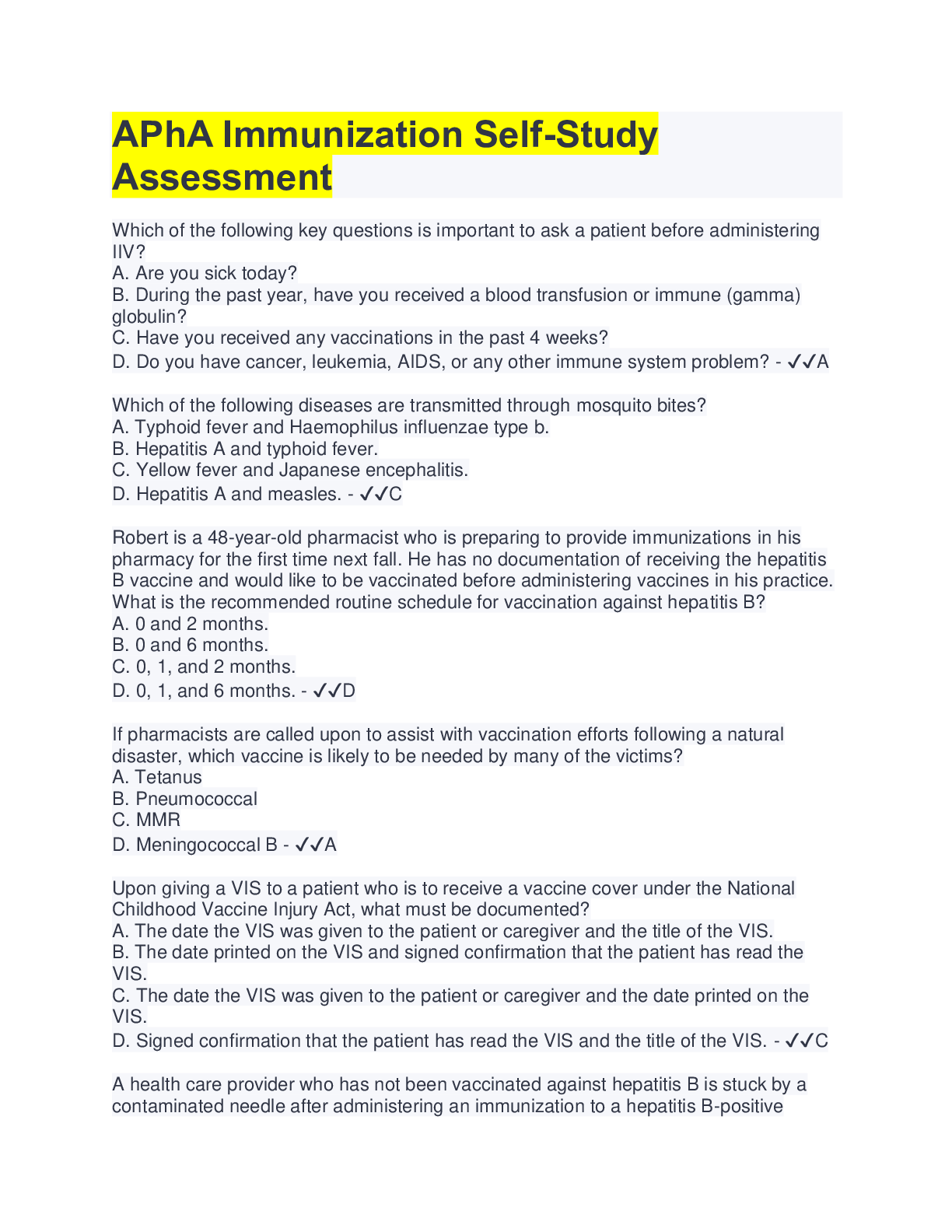
Buy this document to get the full access instantly
Instant Download Access after purchase
Add to cartInstant download
We Accept:

Reviews( 0 )
$9.00
Document information
Connected school, study & course
About the document
Uploaded On
Sep 26, 2021
Number of pages
7
Written in
Additional information
This document has been written for:
Uploaded
Sep 26, 2021
Downloads
0
Views
84



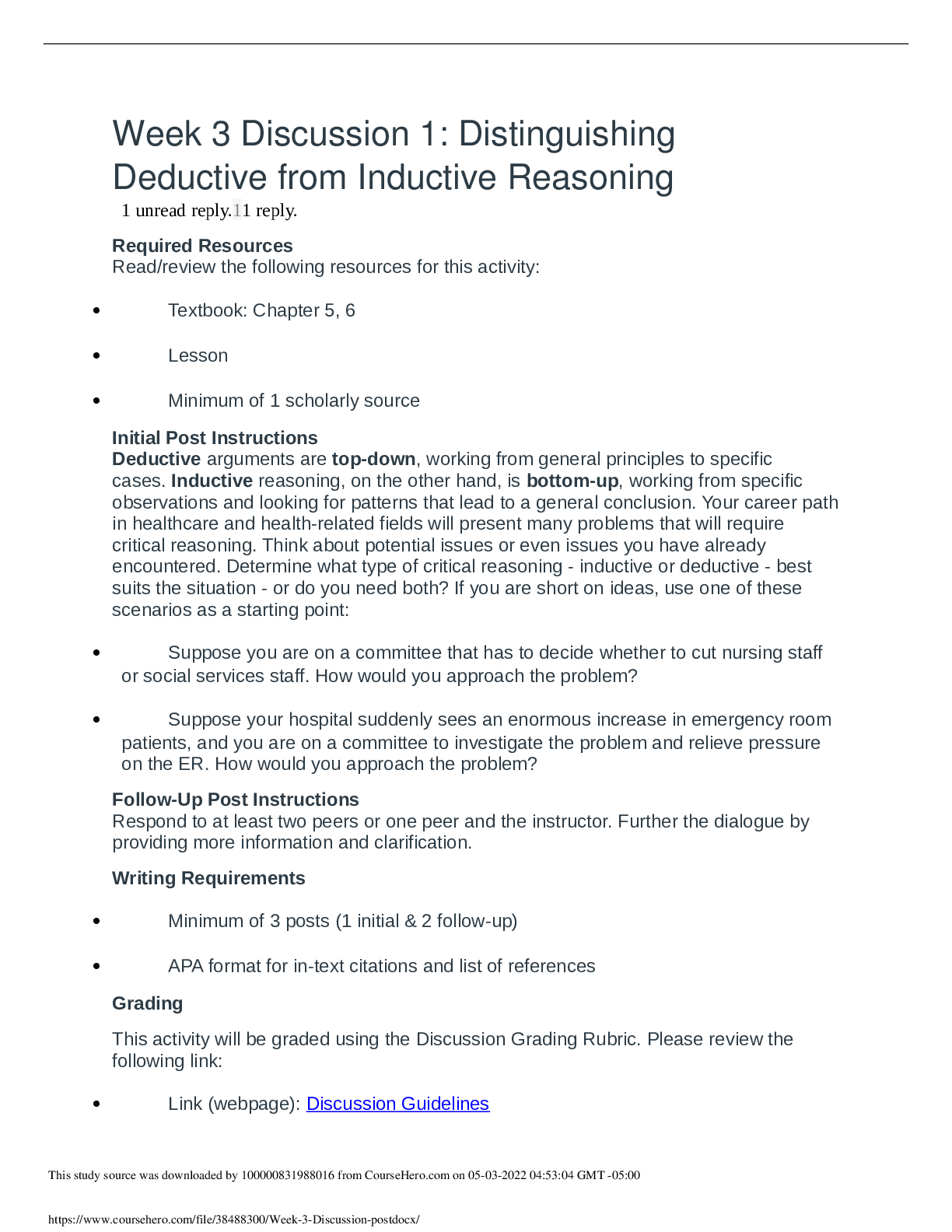

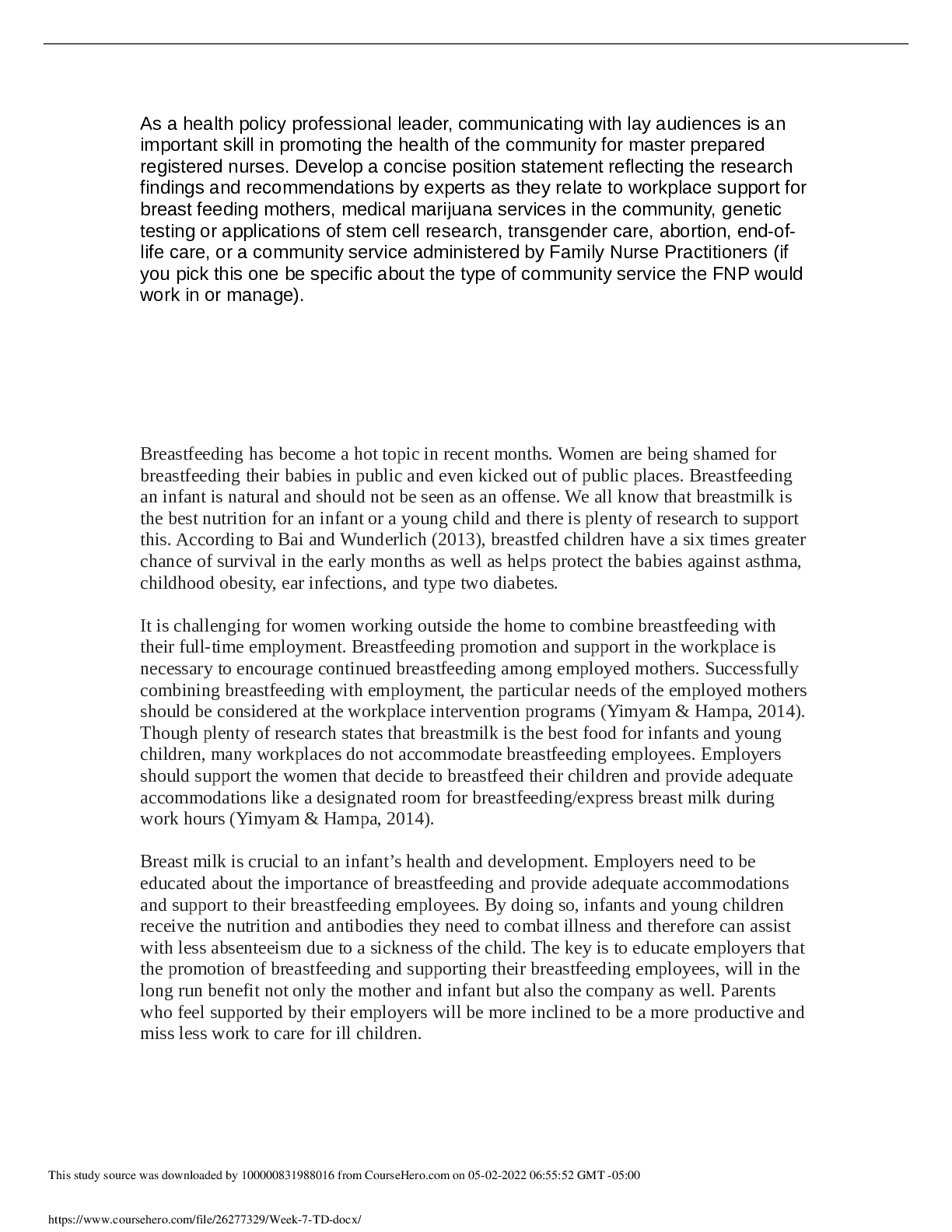

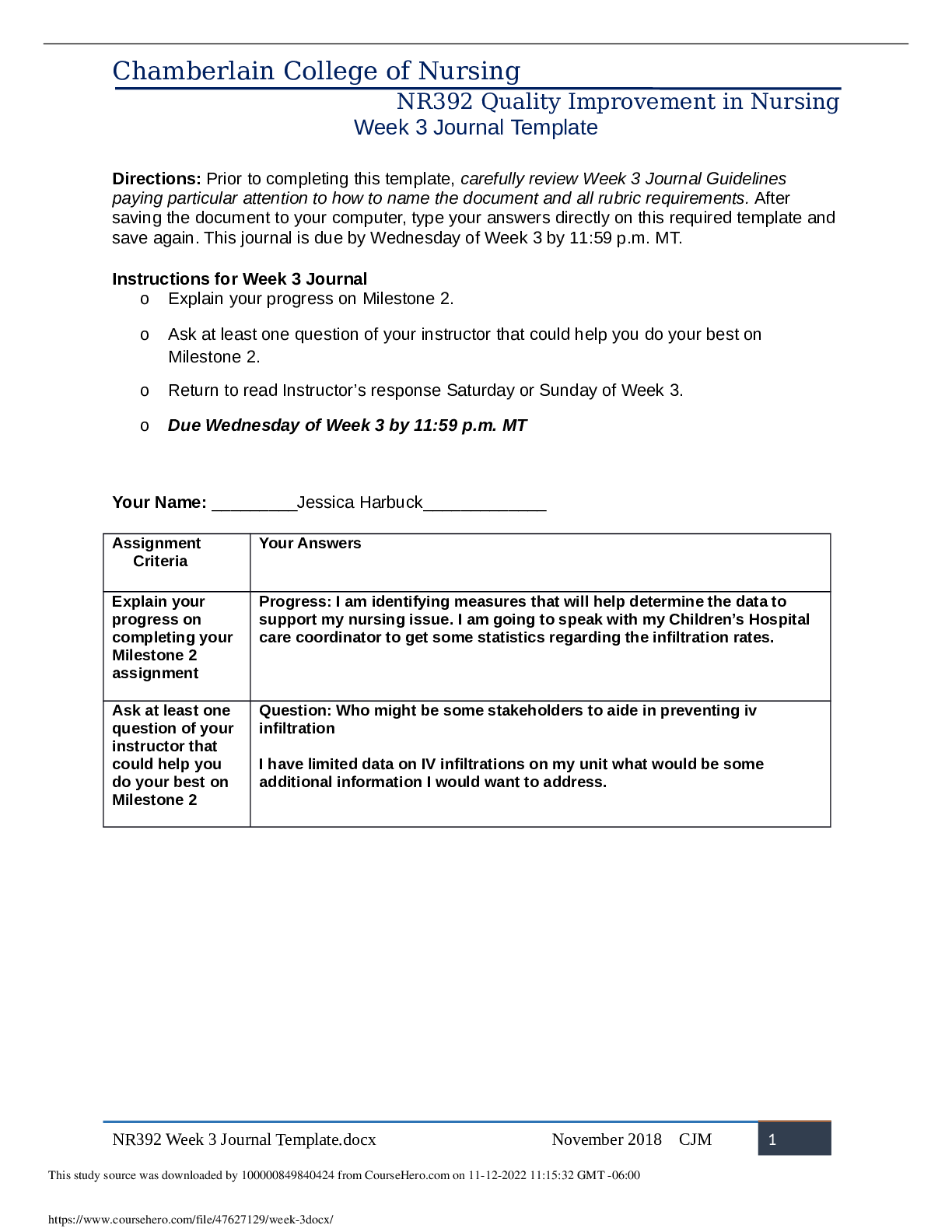

.png)

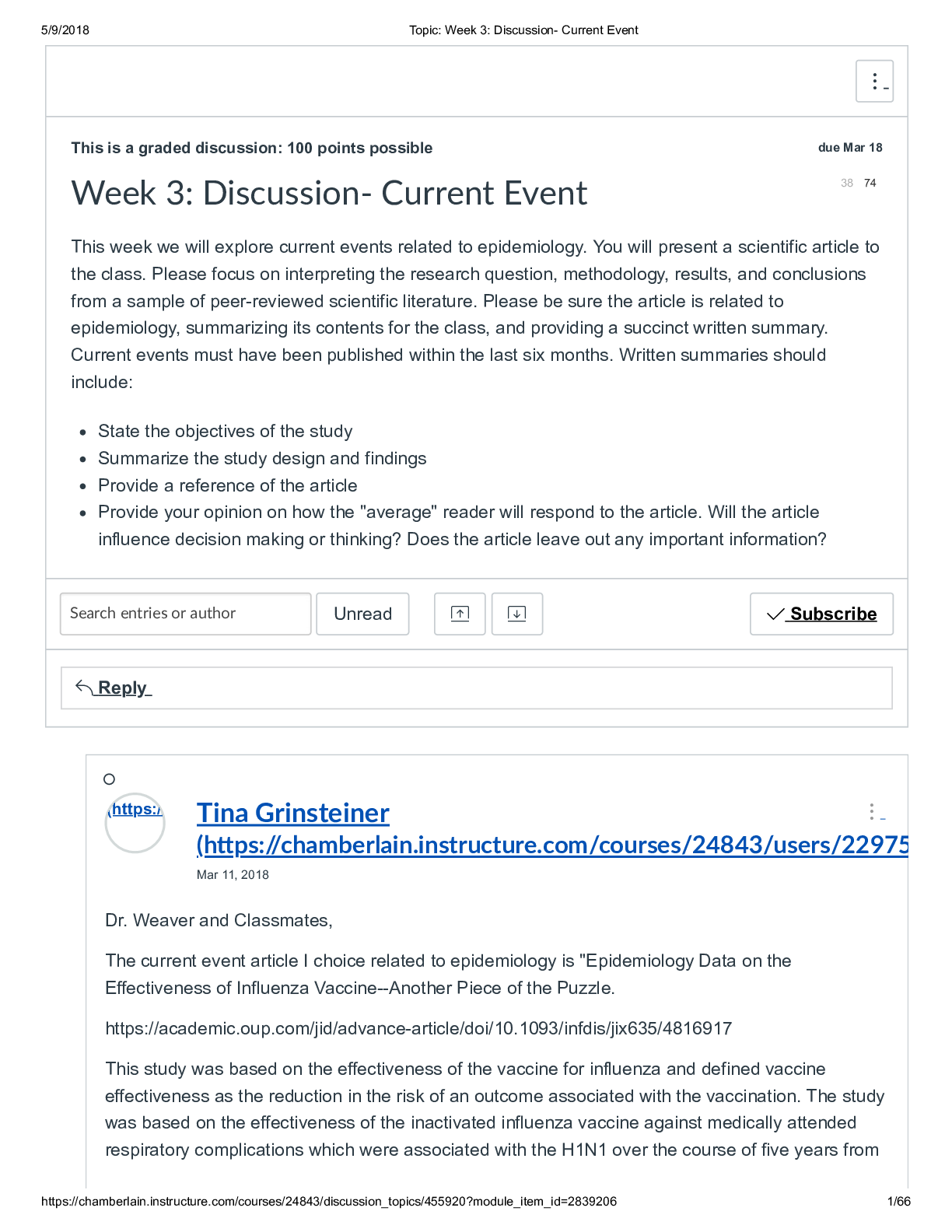
.png)


